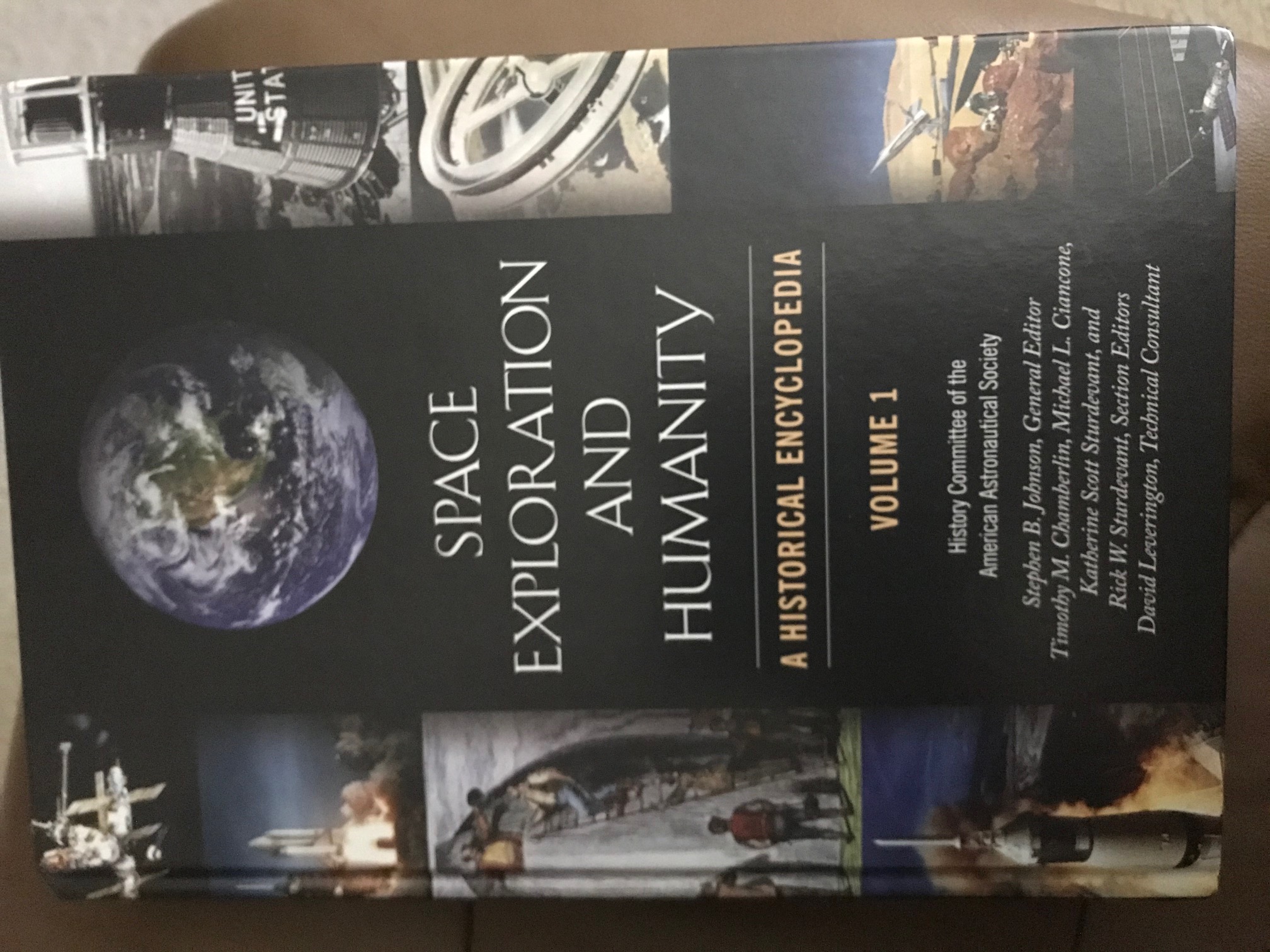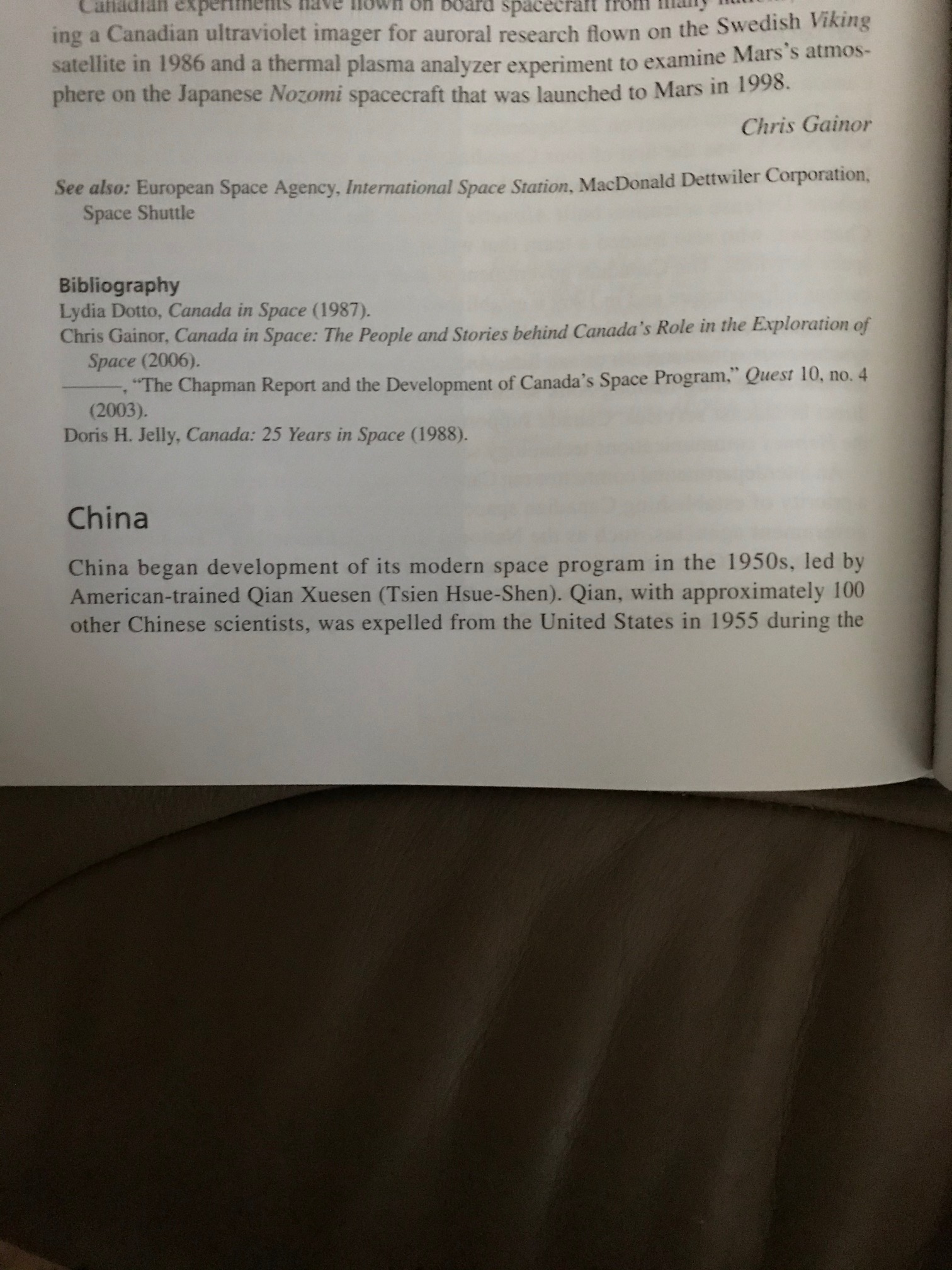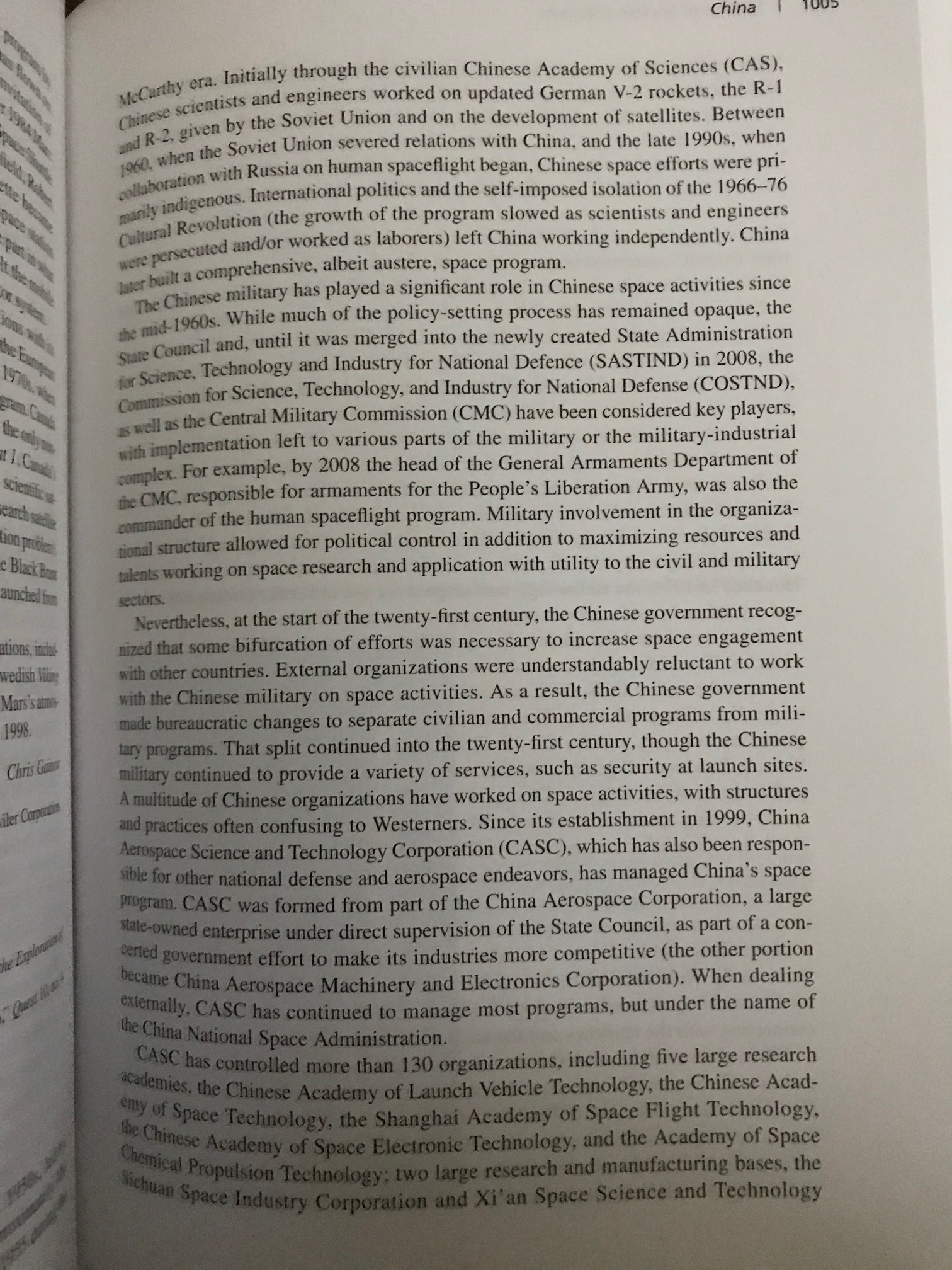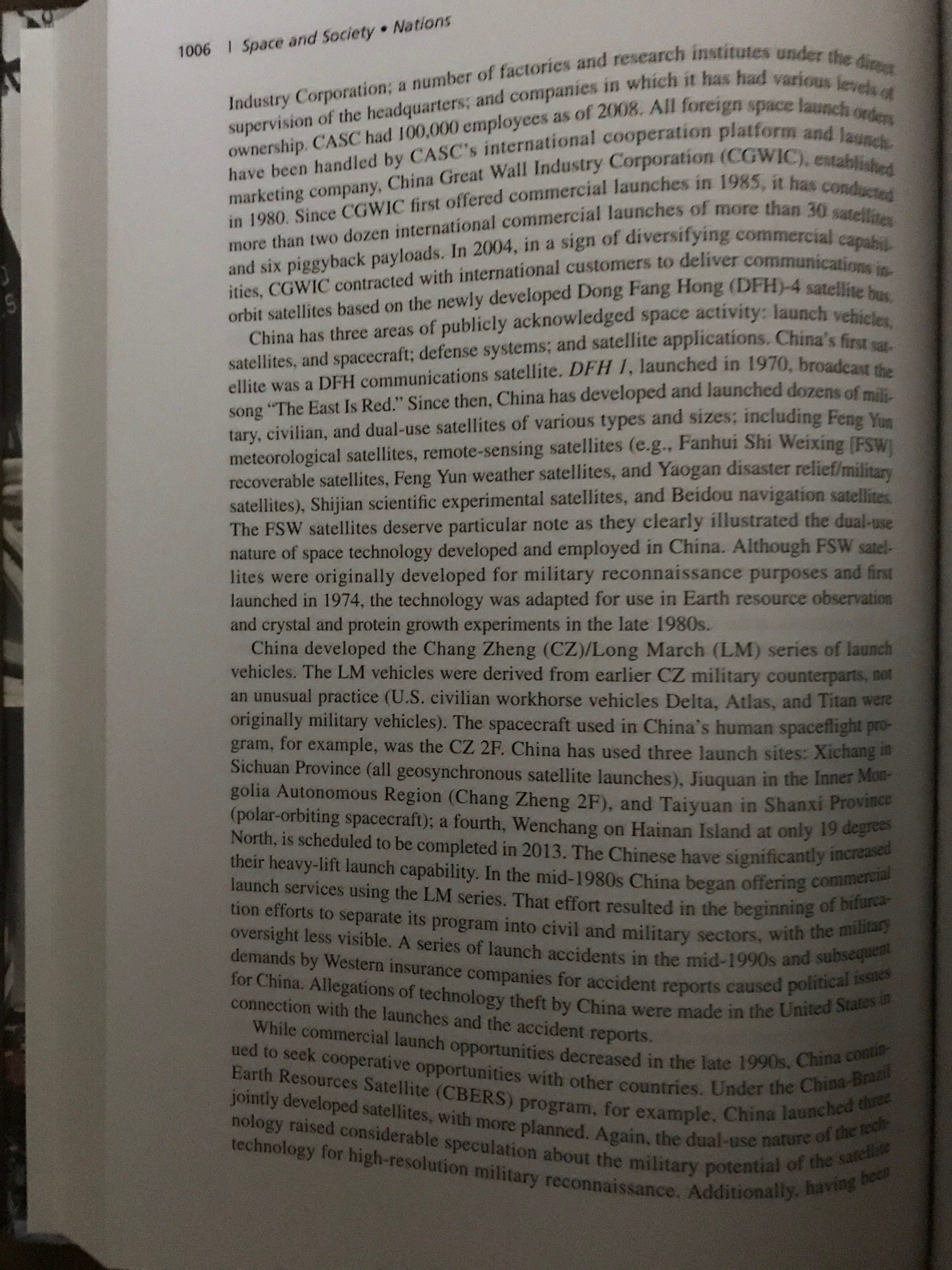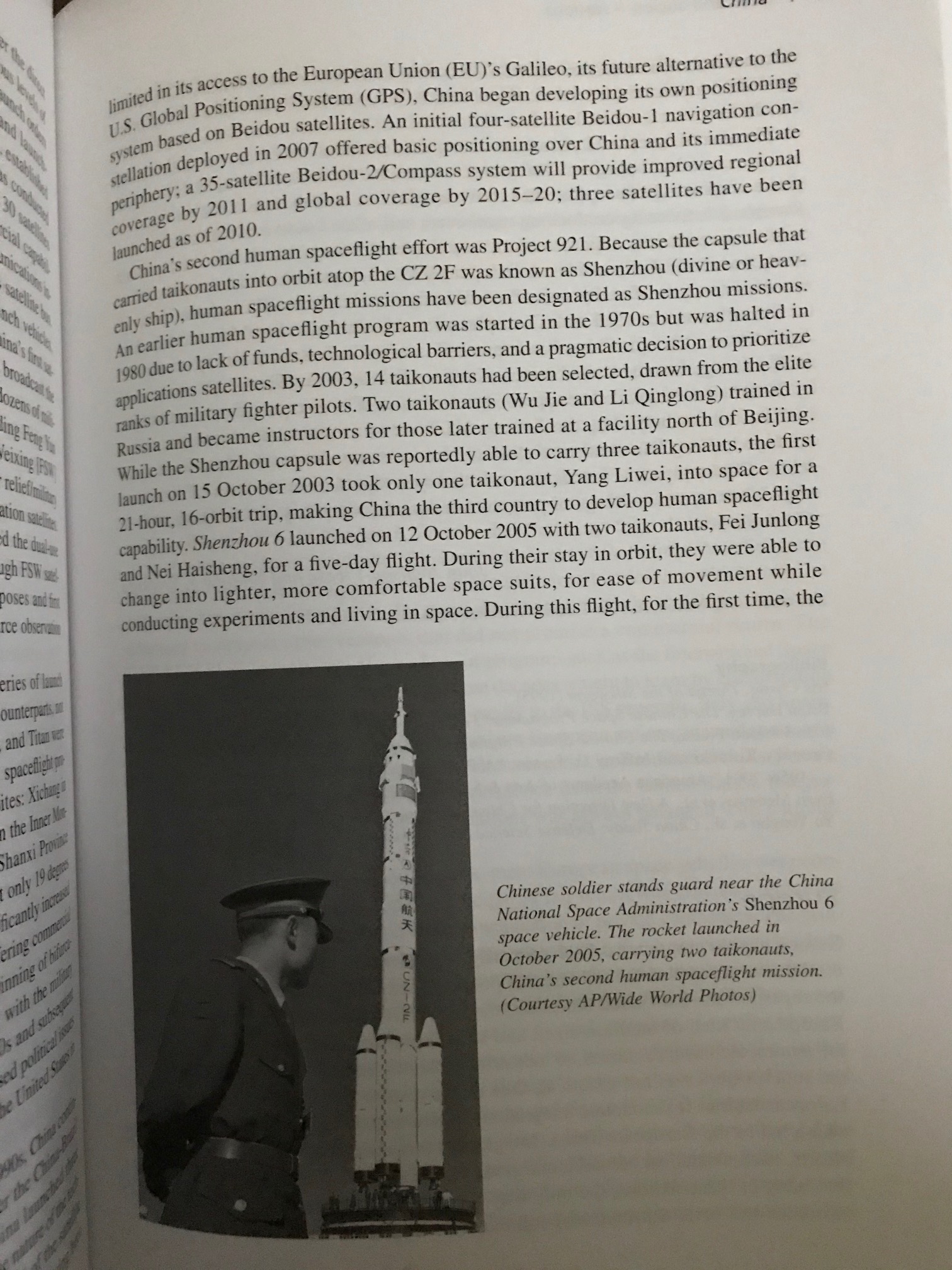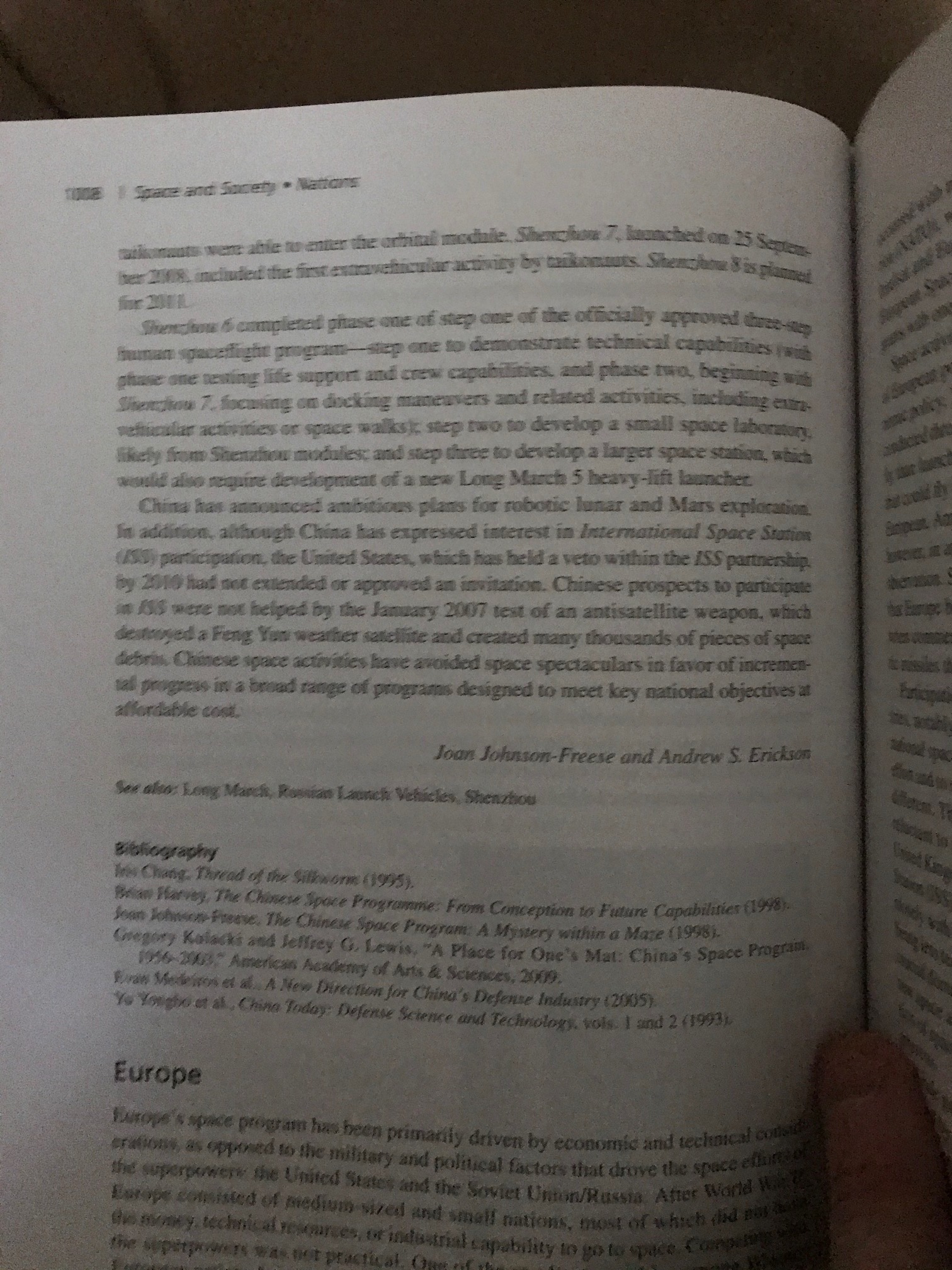“China” and “Japan” Entries in Space Exploration and Humanity: A Historical Encyclopedia
Joan Johnson-Freese and Andrew S. Erickson; “China,” 1004-08, and “Japan,” 1021-25; in Stephen B. Johnson, ed., Space Exploration and Humanity: A Historical Encyclopedia (Washington, DC: NASA/ABC-CLIO, 2010).
A complete history of human endeavors in space, this book also moves beyond the traditional topics of human spaceflight, space technology, and space science to include political, social, cultural, and economic issues, and also commercial, civilian, and military applications.
Joan Johnson-Freese and Andrew S. Erickson, “China,” in Stephen B. Johnson, ed., Space Exploration and Humanity: A Historical Encyclopedia (Washington, DC: NASA/ABC-CLIO, 2010), 1004-08.
Joan Johnson-Freese and Andrew S. Erickson, “Japan,” in Stephen B. Johnson, ed., Space Exploration and Humanity: A Historical Encyclopedia (Washington, DC: NASA/ABC-CLIO, 2010), 1021-25.
INFORMATION ON VOLUME
A complete history of human endeavors in space, this book also moves beyond the traditional topics of human spaceflight, space technology, and space science to include political, social, cultural, and economic issues, and also commercial, civilian, and military applications.
Born of unquenchable curiosity, fueled by astounding technology, the exploration of space is one of humankind’s definitive achievements. As history, it offers real-life drama no fiction can match—a multigenerational global saga filled with vivid and eccentric personalities, high stakes politics, bold scientific leaps, and legend-in-the-making tales of courage, heartbreak, failure, and triumph.
In two expertly written volumes, Space Exploration and Humanity: A Historical Encyclopedia covers all aspects of space flight in all participating nations, ranging from the Cold War–era beginnings of the space race to the lunar landings and the Apollo-Soyuz mission; from the Shuttle disasters and the Hubble telescope to Galileo, the Mars Rover, and the International Space Station. The book moves beyond the traditional topics of human spaceflight, space technology, and space science to include political, social, cultural, and economic issues, and also commercial, civilian, and military applications.
Produced in conjunction with the History Committee of the American Astronautical Society, this work divides its coverage into six sections, each beginning with an overview essay, followed by an alphabetically organized series of entries on topics such as astrophysics and planetary science; civilian and commercial space applications; human spaceflight and microgravity science; space and society; and space technology and engineering. Whether investigating a specific issue or event or tracing an overarching historic trend, students and general readers will find this an invaluable resource for launching their study of one of humanity’s most extraordinary endeavors.
Title Features
• 580 articles describing various aspects of manned and unmanned space exploration, including a full range of social, technological, and political issues, such as government policy, nationalism, and the technology/military-driven economy
• Six overview essays, introducing each of the encyclopedia’s major sections and putting that aspect of space exploration into historical context
• 136 contributors, many who are leading space historians and experts affiliated with the American Astronautical Society, make firsthand knowledge and fresh insights accessible to all audiences
• Numerous photos, including stunning shots from space, star charts, technical drawings, and more
• Short bibliographies conclude each entry, pointing readers to the best sources to find out more about the topic
• A Glossary defining the various technical terms encountered in the encyclopedia
Highlights
• Sets a new standard for covering a topic of high interest for secondary and undergraduate students and the general public alike
• Authorship includes most of the leading historians of space and technology, thus giving it an authoritativeness that is unmatched
• More comprehensive than any other title on the market, exploring the entirety of human interaction with space, including U.S., Russian, Chinese, and European space programs
• Ties the scientific achievements of the world’s space programs to the changing social environments of the 1960s–1990s

